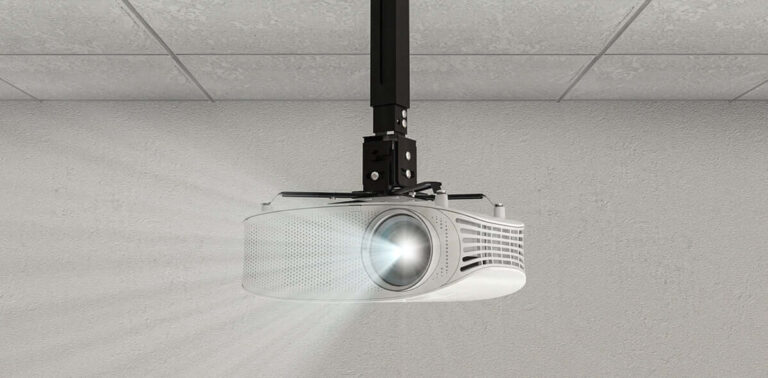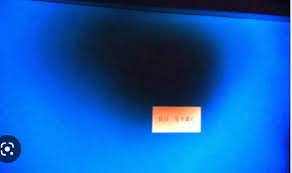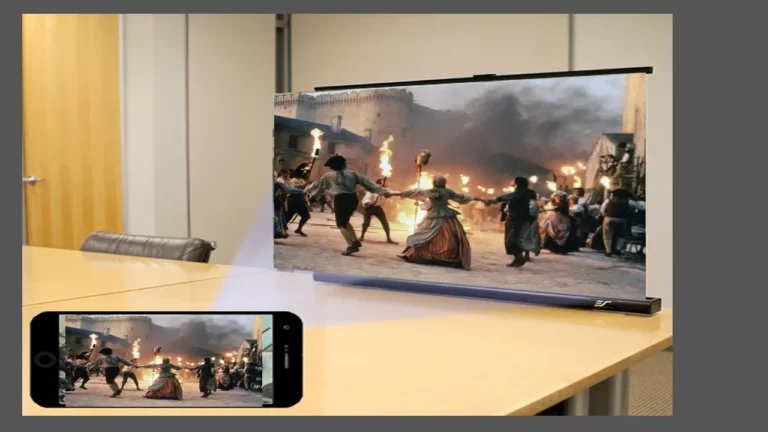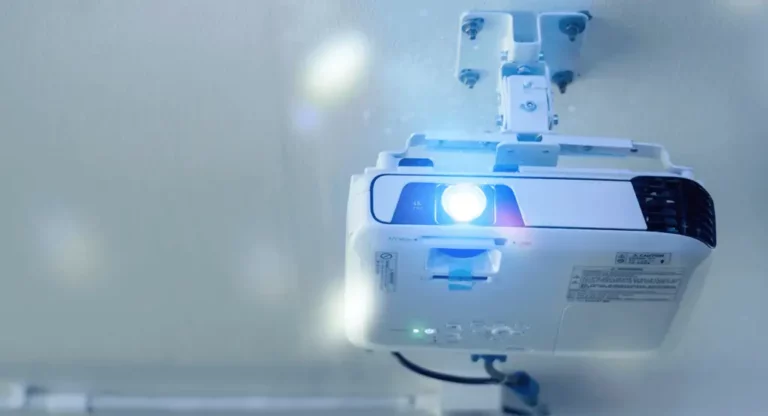What Size Projector Screen Do I Need?
Are you planning to bring the cinematic experience into your home or looking to enhance your presentations with a projector screen? One of the fundamental questions you’ll encounter is, What size projector screen do I need?
While preferences may vary, it’s worth noting that the most popular projector screen sizes typically fall within the range of 100 to 120 inches diagonally, spanning approximately 2.5 to 3 meters.
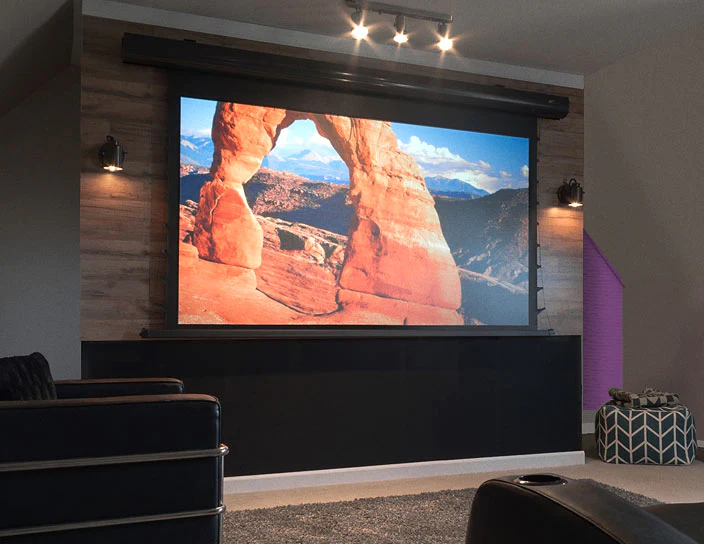
In this guide, we will delve into the factors of How To Measure The Correct Screen Size and help you determine the ideal projection dimension to ensure an immersive and enjoyable visual experience tailored to your needs.
What size screen for 100 people?
When it comes to selecting the correct screen size for a group of 100 people, an 8-foot screen is undoubtedly a fantastic solution. This size provides an optimal viewing experience by ensuring that all in the audience can easily see the content displayed.
Whether you’re organizing a business presentation, hosting a conference, or arranging a movie night, having an 8-foot screen will guarantee that no one misses out on any crucial details.
One of the most significant advantages of using an 8-foot screen for larger groups is that it creates a more immersive and engaging atmosphere. With such a considerable display area, viewers are captivated by the visuals and feel entirely involved in whatever is being presented or shown.
Does Projector Size Matter?
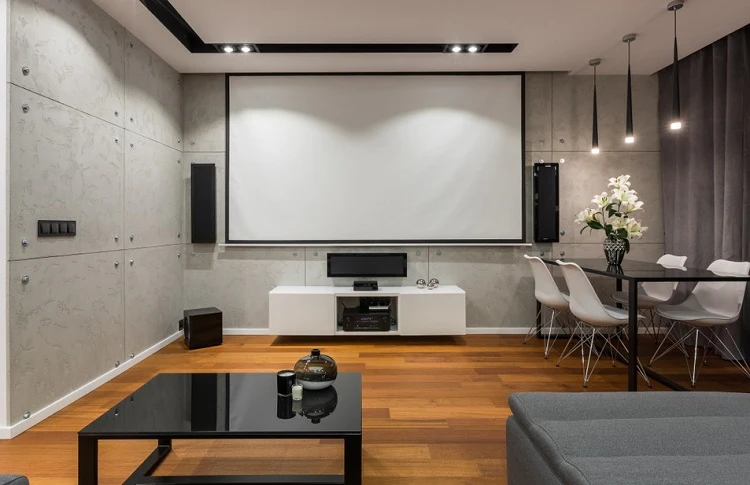
When it comes to projectors, size definitely matters. A larger projector screen can create a more immersive and captivating viewing experience. The size of the projector screen directly impacts the clarity and quality of the images projected onto it. With a bigger screen, you can enjoy intricate details and vibrant colors that may get lost on a smaller display.
Moreover, the right size of the projector screen also influences your viewing comfort. A small screen might strain your eyes as you try to catch every detail in a movie or presentation. On the other hand, a larger screen allows for easier visibility from different angles, ensuring that everyone in the room can enjoy an unobstructed view.
How To Measure The Correct Screen Size?
When it comes to setting up a projector screen, getting the screen size right is crucial for a satisfying viewing experience. Whether you’re creating a home theater, setting up a presentation space, or preparing for an outdoor movie night, measuring the correct screen size involves considering various factors. So, we’ll walk you through the essential steps to determine the perfect screen dimensions for your needs.
Entire Room Size
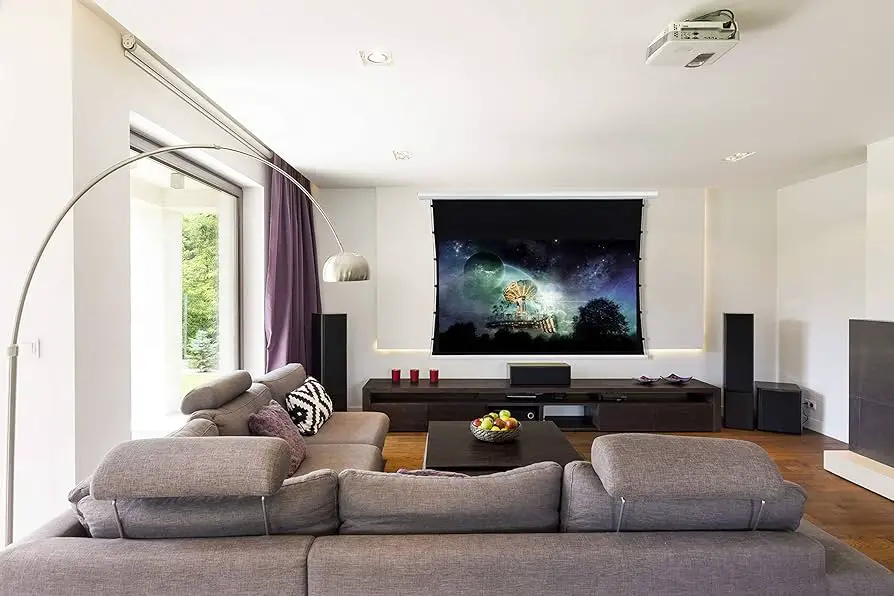
Before you select a projector screen size, you need to take into account the dimensions of the room or space where you’ll be using it. Measure the width and length of the room and make a note of any architectural features, such as spaces or doors, that might impact the placement of the screen. This information will help you determine the maximum screen size your room can accommodate without obstructing any critical elements.
Screen Height
The screen height refers to the vertical dimension of the screen. To measure this, you should decide where you want to mount the screen. Typically, screens are mounted at eye level when seated. Measure the distance from the floor to the desired mounting height. This measurement will help ensure that the screen is positioned correctly for comfortable viewing.
Screen Width
The screen width, also known as the aspect ratio, plays a notable role in determining the overall screen size. Common aspect ratios include 16:9 (widescreen) and 4:3 (standard). To calculate the screen width, you can use the aspect ratio and the desired diagonal size.
For example, you want a 100-inch diagonal screen with a 16:9 aspect ratio. In that case, you can calculate the width by multiplying the diagonal size by the square root of (16^2 + 9^2), which is approximately 87 inches.
Distance Between Screen And Projector
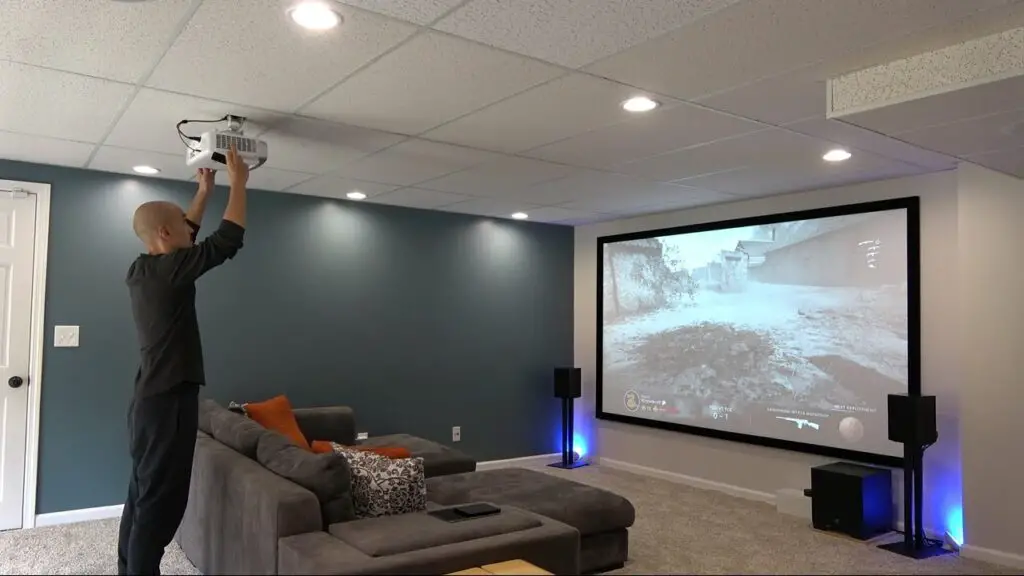
The gap between the projector and the screen, known as the throw distance, is another critical factor. It determines the size of the image the projector can cast. Consult your projector’s user manual or specifications to find the recommended throw distance for your desired screen size. Ensure that you have enough space in your room to accommodate this distance.
Measuring The Screen Diagonal Size
The diagonal size is the most commonly used measurement for projector screens. To measure the diagonal size accurately, start from one corner of the screen and extend the measuring tape diagonally to the opposite corner. Ensure that you measure from the visible screen area, excluding any bezels or frames.
By considering these factors and following these measurement guidelines, you can confidently determine the correct screen size for your projector setup, ensuring a visually engaging and enjoyable experience for your audience.
Frequently Asked Question
How much should I spend on the projector screen?
When it comes to purchasing a projector, many people tend to focus solely on the cost of the device itself. However, it’s essential to pay attention to the additional expense of a projector screen. While some may feel tempted to skimp on this aspect of their home theater setup, allocating 15-30 percent of your total projector cost towards a quality screen can make all the difference in your viewing experience.
Are expensive projector screens worth it?
Investing enough money to get something that’s easy to set up and offers decent performance is a wise choice, mainly when it comes to projector screens. Are expensive projector screens worth it? Well, the answer depends on your specific requirements and expectations. While cheaper options may seem tempting initially, spending a bit more on a higher-quality screen can have a serious impact on your overall viewing experience.
Final Thoughts: What Size Projector Screen Do I Need?
When determining the size of a projector screen, it is vital to consider the viewing distance and the setup of your space. The most popular screen sizes, ranging from 100 to 120 inches diagonal, offer an immersive cinematic experience for most home theaters or conference rooms. However, it is crucial to measure the available space and ensure that the screen size is manageable for the room, resulting in strained viewing angles.
By taking these points into account, you can choose a projector screen size that enhances your visual experience and provides optimal enjoyment. So go ahead and measure your space today to find the ideal size for your projector screen!

